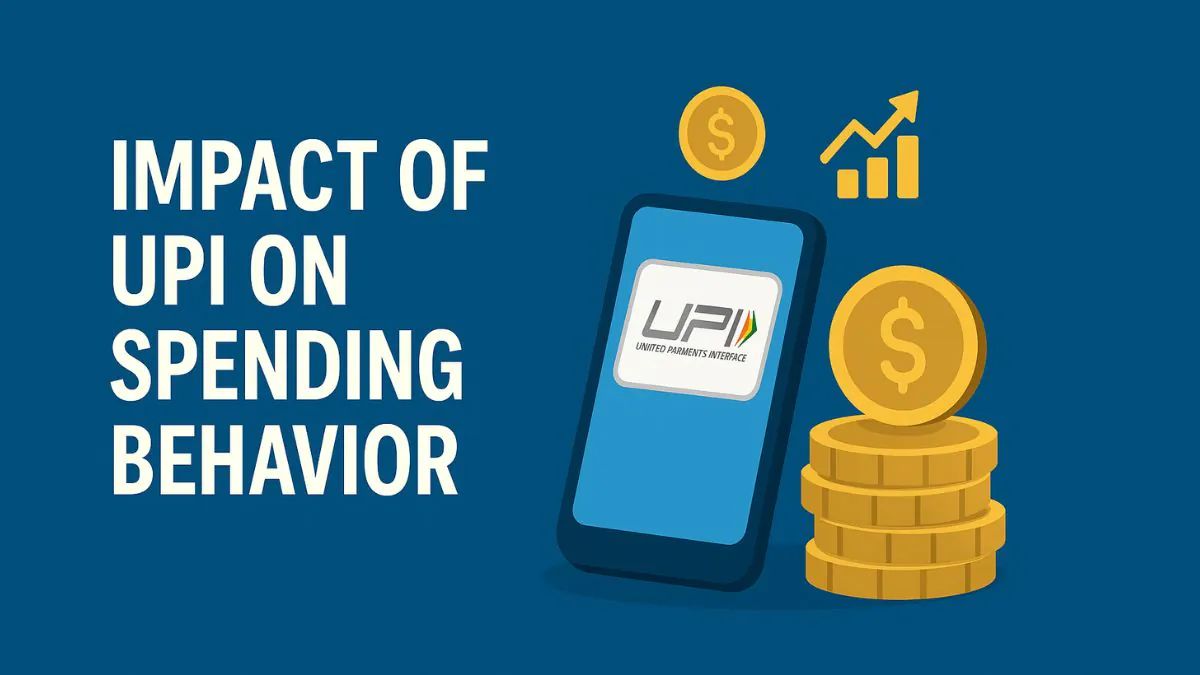Why Do 75% of UPI Users Spend More?

Table of Contents
ToggleShare this article ↷
The Surprising Psychology Behind Tap-and-Pay
In India, paying for chai, groceries, or even a rickshaw ride has become as easy as a quick tap on your phone, thanks to the Unified Payments Interface (UPI).
But here’s the catch: a recent study shows that 75% of UPI users are spending more than before. Why does this happen? Let’s dive into the psychology behind tap-and-pay and explore ways to keep your wallet happy.
Read more: 90-Day Tariff Pause: India, U.S. Rush to Seal Trade Deal
The Ease of UPI: A Double-Edged Sword for UPI Users
UPI, launched by the National Payments Corporation of India (NPCI), has made transactions super convenient. Whether it’s splitting a bill at a dhaba or shopping online, UPI users love the speed and simplicity.
But this ease can trick our brains. When you pay with cash, you feel the money leaving your hand-it stings a bit, right? With UPI, it’s just a tap, and poof, the money’s gone. This lack of “pain” makes UPI users spend more without realizing it.
Studies suggest digital payments reduce the mental barrier to spending. You don’t see notes slipping away, so it feels like you’re not spending much. Before you know it, your monthly budget is in the red!
Personal Finance: Why Budgets Go Haywire
For many UPI users, personal finance takes a hit because of impulse buys.
Picture this: you’re scrolling through an online sale, see a cool kurta, and tap to pay. Done! That quick decision often skips the “Do I really need this?” question. UPI’s seamless system encourages small, frequent purchases that add up fast.
Another reason? UPI apps show your bank balance instantly, making it feel like you’ve got plenty to spend. But this can lead to overspending, especially if you’re not tracking your expenses. Without a plan, UPI users can fall into the trap of living paycheck to paycheck.
Tips to Stay Financially Savvy
Don’t worry, you can still enjoy UPI’s convenience without burning a hole in your pocket. Here are some practical tips:
- Set a Budget: Decide a monthly limit for UPI spending. Apps like RBI’s BHIM let you track transactions to stay on course.
- Use Alerts: Many UPI apps send notifications for every transaction. Turn them on to keep tabs on your spending.
- Pause Before Paying: Before tapping “Pay,” ask, “Is this worth it?” A quick rethink can save you from impulse buys.
- Review Weekly: Check your UPI transactions every week. It’s like a reality check for your personal finance goals.
Key Takeaways
UPI is a game-changer, but its ease can lead to overspending. By understanding the psychology behind tap-and-pay, UPI users can make smarter choices. Set budgets, stay mindful, and keep your personal finance in check to enjoy UPI without the guilt.
What’s your trick to avoid overspending with UPI? Share in the comments and let’s help each other save some paisa!
Disclaimer
Well Returns is not a financial adviser. The content provided here is for informational purposes only and is intended to offer a brief overview and general knowledge. It is not a substitute for professional financial advice. Please consult a qualified financial adviser before making any financial decisions or investments.
Related FAQs
UPI users spend more because digital payments feel less real than handing over cash. The quick tap-and-pay process reduces the mental effort needed, leading to frequent purchases.
UPI users can manage finances by setting budgets, using transaction alerts, and reviewing spending weekly to avoid impulse purchases and stay within limits.
Yes, apps like BHIM and other UPI platforms offer features to monitor transactions. Users can also set spending limits to maintain control over their finances.






